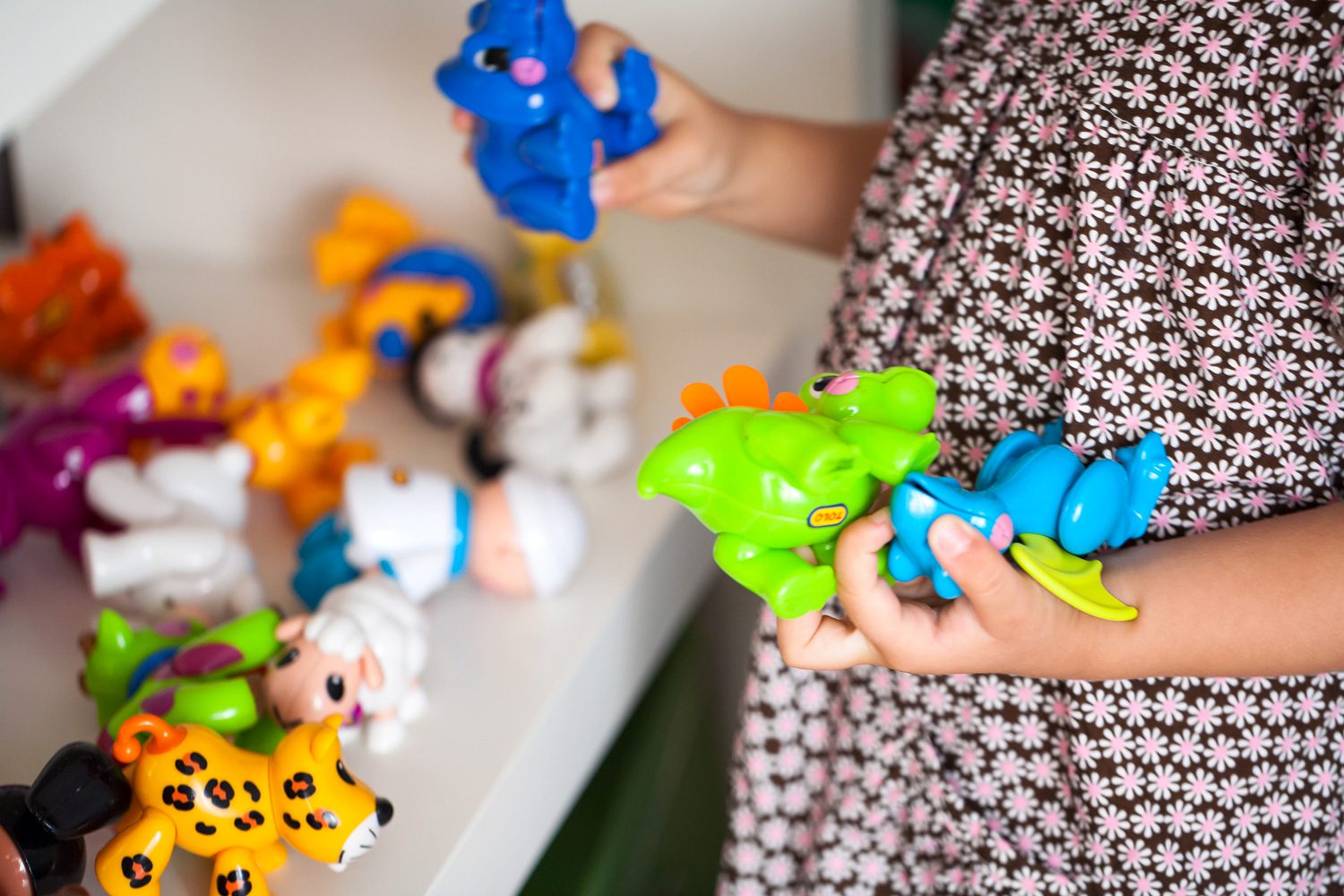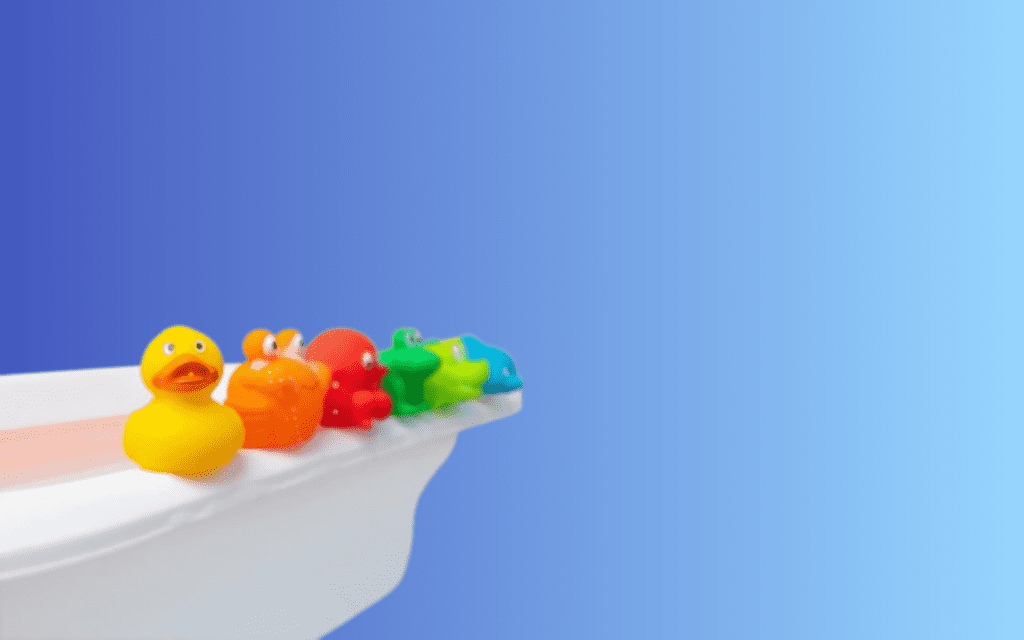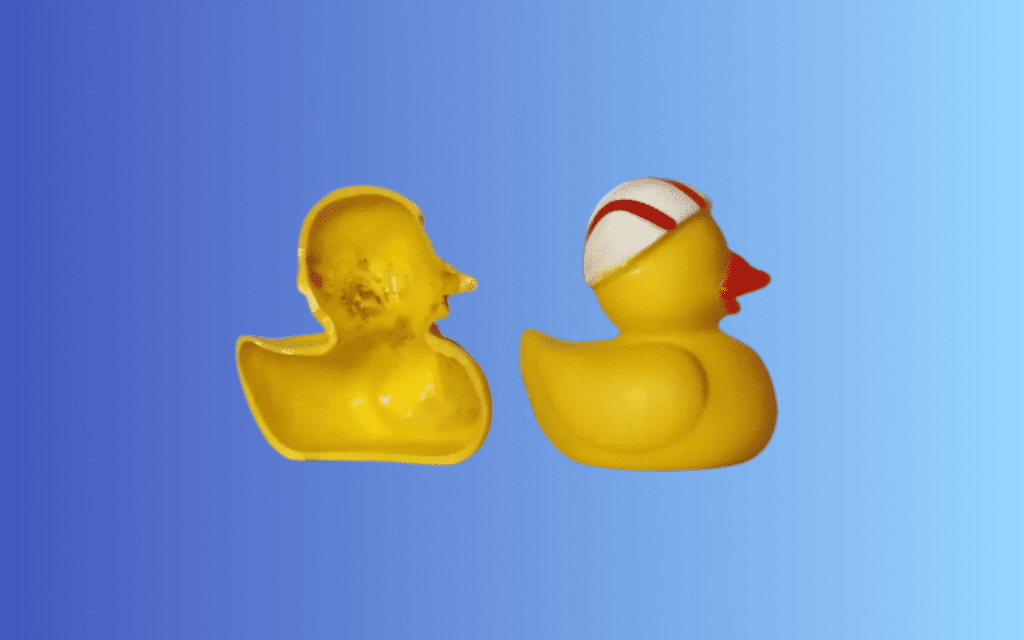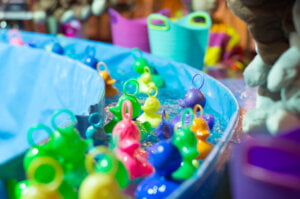
How to Keep Bath Toys from Molding in 2023


Are you tired of dealing with moldy bath toys that can potentially harm your child’s health? Mold growth in bath toys is a common problem that many parents face. However, with a few simple steps, you can keep your bath toys clean and mold-free.
In this article, we will share effective techniques on how to keep bath toys from molding, ensuring a safe and enjoyable bath time for your little ones.
Why Most Cleaning Methods Fail and How You Can Succeed

Before we get into the steps to keeping bath toys from molding, here are some reasons why your cleaning methods are or could be failing you in the first place:
Inadequate Cleaning Techniques
Many cleaning methods fail because they do not effectively remove all the dirt, soap residue, and potential mold spores from bath toys. Simply rinsing with water or using mild detergents might not be sufficient, you need to learn how to sanitize bath toys. To succeed, incorporate regular deep cleans using vinegar or bleach solutions to eliminate any hidden mold and ensure thorough cleanliness.
Insufficient Drying
One of the main reasons for bathtub toys mold is insufficient drying. If toys are not dried completely after each use, moisture accumulates, creating an ideal environment for mold growth. Emphasize the importance of proper drying techniques. Air-dry toys in well-ventilated areas or use towels or drying racks to expedite the drying process.
Improper Storage
Storing wet bath toys in enclosed spaces or containers restricts airflow, allowing moisture to linger and promoting mold growth. To succeed, parents need to learn proper storage practices. Suggest using breathable mesh bags or containers that allow air circulation and ensure toys are completely dry before storing them.
Neglecting Regular Inspections
Failing to monitor bath toys regularly can lead to unnoticed mold growth or deterioration. Mold may develop in hidden areas, making it difficult to detect with a casual glance. Parents should inspect toys periodically for any signs of mold or wear and tear. Promptly discard any toys showing signs of mold growth to prevent spreading spores.
How to Keep Bath Toys from Molding: Step-by-Step Guide


To keep your bath toys clean and mold-free, follow these steps for a fresh approach:
- Step #1: Choose Mold-Resistant Bath Toys
- Step #2: Properly Clean and Dry Bath Toys after Each Use
- Step #3: Perform Regular Deep Cleans
- Step #4: Store Bath Toys Properly
- Step #5: Monitor and Inspect Bath Toys Regularly
Step #1: Choose Mold-Resistant Bath Toys
To prevent mold growth, look for bath toys made of mold-resistant materials such as silicone or hard plastic. These materials are less likely to harbor moisture and promote mold development. Avoid toys with holes or crevices that can accumulate water, as they provide an ideal breeding ground for mold. Look for toys labeled as “mold-resistant” or “easy to clean” to ensure a higher level of durability and resistance to mold.
Step #2: Properly Clean and Dry Bath Toys after Each Use
After each bath, rinse the toys thoroughly with clean water to remove any soap residue or leftover bath products. Using a mild detergent or a vinegar solution, periodically clean the toys to eliminate any potential mold spores. Gently scrub the toys with a brush to remove any dirt or grime. Rinse the toys again to ensure all cleaning agents are completely removed. Properly drying the toys is crucial in preventing mold growth. After each use, dry the toys completely by placing them in a well-ventilated area or using a towel or drying rack to expedite the drying process. Ensure that no moisture remains inside or on the surface of the toys.
Step #3: Perform Regular Deep Cleans
To maintain a mold-free environment for your bath toys, perform regular deep cleans every few weeks. Prepare a cleaning solution by mixing warm water with white vinegar or a bleach solution. Follow the recommended dilution and safety guidelines for the cleaning agents. Submerge the toys in the mixture and allow them to soak for a specified period. This deep cleaning process will help eliminate any hidden mold or bacteria. After the designated soaking time, thoroughly rinse the toys with clean water to remove any residual cleaning agents. Finally, ensure the toys are completely dry before returning them to their storage area.
Step #4: Store Bath Toys Properly
Proper storage is crucial in preventing mold growth on bath toys. Avoid storing wet toys in enclosed spaces, as it restricts airflow and creates a damp environment conducive to mold development. Instead, use a mesh or breathable bag to store the toys, allowing air to circulate and facilitate drying. Before storing the toys, ensure they are completely dry. Choose a clean and dry area for storage, away from humidity and direct sunlight, to prevent moisture accumulation.
Step #5: Monitor and Inspect Bath Toys Regularly
Regular monitoring and inspection of bath toys are essential to catch any signs of mold growth or deterioration. Periodically check the toys for any visible mold spots, discoloration, or unpleasant odor. If you notice any signs of mold growth, it’s important to discard them, as cleaning bath toys may not effectively remove all mold spores. Additionally, inspect the toys for wear and tear, such as cracks or loose parts, and replace them if necessary to maintain safety standards.
Conclusion
Understanding how to keep bath toys from molding is crucial for the health and safety of your child during their bath time. By implementing the steps outlined in this article, you can effectively prevent mold growth and ensure a hygienic environment for your little ones to play with their toys. Choosing mold-resistant bath toys and properly cleaning them after each use are essential starting points. Regular deep cleans and thorough drying help eliminate hidden mold and prevent moisture buildup. Storing bath toys in breathable containers and conducting regular inspections further contribute to a mold-free environment.
Remember, mold not only affects the longevity of bath toys but also poses health risks. Mold spores can lead to allergies and respiratory problems. If you follow the advice we provided properly, you can provide your child with a safe and enjoyable bath experience while maintaining the longevity of their toys.




Your article helped me a lot, is there any more related content? Thanks!
Thank you for your sharing. I am worried that I lack creative ideas. It is your article that makes me full of hope. Thank you. But, I have a question, can you help me?
I don’t think the title of your article matches the content lol. Just kidding, mainly because I had some doubts after reading the article.
Thank you for your sharing. I am worried that I lack creative ideas. It is your article that makes me full of hope. Thank you. But, I have a question, can you help me?
Thank you for your sharing. I am worried that I lack creative ideas. It is your article that makes me full of hope. Thank you. But, I have a question, can you help me?
Can you be more specific about the content of your article? After reading it, I still have some doubts. Hope you can help me. https://accounts.binance.com/bg/register?ref=V2H9AFPY
Your article helped me a lot, is there any more related content? Thanks!
Kudos! I value this!
meilleur casino en ligne
Regards, I value this.
casino en ligne
Excellent knowledge, Kudos!
meilleur casino en ligne
Many thanks! Wonderful stuff.
casino en ligne
Wow all kinds of superb knowledge!
casino en ligne
Nicely put, Many thanks.
meilleur casino en ligne
You revealed it wonderfully!
casino en ligne
Wow loads of great data!
casino en ligne
You actually stated that wonderfully.
casino en ligne France
You revealed this wonderfully.
casino en ligne
Can you be more specific about the content of your article? After reading it, I still have some doubts. Hope you can help me.
I don’t think the title of your article matches the content lol. Just kidding, mainly because I had some doubts after reading the article.
Thank you for your sharing. I am worried that I lack creative ideas. It is your article that makes me full of hope. Thank you. But, I have a question, can you help me?
Thanks for sharing. I read many of your blog posts, cool, your blog is very good.